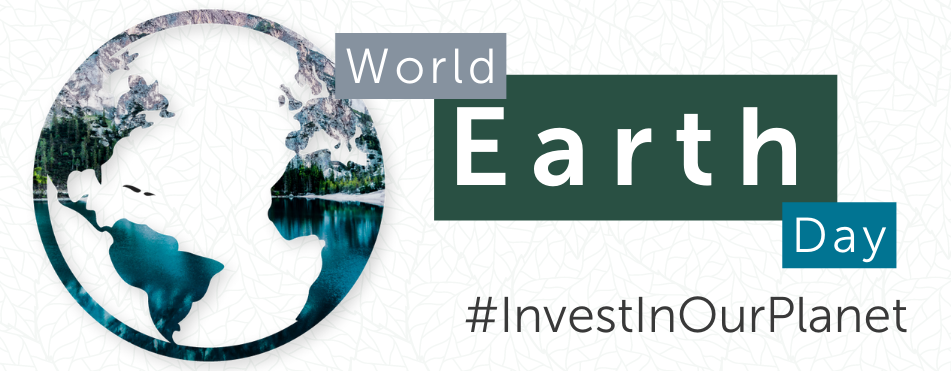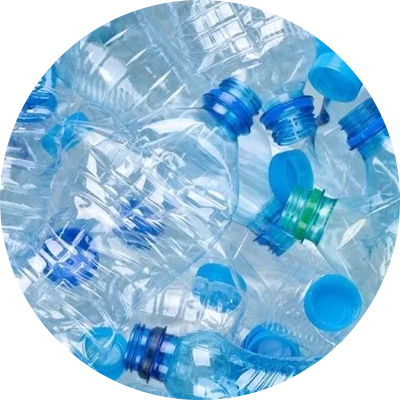
Materials science draws upon the resources of our Earth, is inspired by it, and is increasingly focused on tackling issues that are harming it. This World Earth Day, we are looking back at some of our articles and interviews that have highlighted some of the most exciting sustainable innovations.
Interviews
 AZoM spoke to Dr. Bart Kahr from NYU about his research on the crystal structure of the insecticide imidacloprid and its environmental implications.
AZoM spoke to Dr. Bart Kahr from NYU about his research on the crystal structure of the insecticide imidacloprid and its environmental implications.
The loss of bees would qualify as a very bad thing. And, by very bad, I mean that ethically – in the words of the environmental philosopher Kathleen Moore, “It is wrong to wreck the world” – but also practically, we would starve the human species without bees.
 We spoke with Professor Andrea Fratalocchi from KAUST about his research on a previously unrecognized aspect of coal that could open the way to a new solar-driven carbon cycle that is environmentally friendly. Fratalocchi explores how compressed blocks of pulverized coal can be used as the foundation for solar-powered off-grid water purification.
We spoke with Professor Andrea Fratalocchi from KAUST about his research on a previously unrecognized aspect of coal that could open the way to a new solar-driven carbon cycle that is environmentally friendly. Fratalocchi explores how compressed blocks of pulverized coal can be used as the foundation for solar-powered off-grid water purification.
To help mitigate climate change, we need to address social sustainability factors. If we find a way to create a new economy of clean coal and accommodate jobs along the fossil line, we could find common ground that could finally help implement a change. It could allow us to redirect coal resources towards clean economies.
 AZoM talked to Ailong Li, a postdoctoral researcher at RIKEN, about his research that has developed a green catalyst for the production of hydrogen energy. This could revolutionize efforts to leave fossil fuels behind in the production of clean energy.
AZoM talked to Ailong Li, a postdoctoral researcher at RIKEN, about his research that has developed a green catalyst for the production of hydrogen energy. This could revolutionize efforts to leave fossil fuels behind in the production of clean energy.
The green hydrogen produced from water electrolysis is the bridge to connect renewable electricity to the chemical society. Assume we have abundant renewable electricity from solar, wind, and hydrothermal energy. We need to be ready to move to the second stage, converting the abundant renewable electricity into chemicals, fertilizers, pharmaceuticals, and fuels, and to replace industrial processes that consume abundant fossil fuels and produce huge emissions.
 In this interview, we spoke with Anna Watkins about her business Uncommon Alchemy, which is developing an exciting novel textile material made from seaweed.
In this interview, we spoke with Anna Watkins about her business Uncommon Alchemy, which is developing an exciting novel textile material made from seaweed.
We need to communicate that sustainability is not about making one perfect choice, but rather that it is a set of decisions that are complex and subjective – and then, of course, we need to equip consumers to make those decisions based on the facts. The bright side is that there is loads of really exciting work going on across all aspects of the fashion industry, and a lot of push from consumers and industry to fix these problems.
 Mehran Ghasemlou, a research fellow at RMIT University, spoke about his research that has developed a self-cleaning and biodegradable bioplastic that is inspired by the lotus leaf.
Mehran Ghasemlou, a research fellow at RMIT University, spoke about his research that has developed a self-cleaning and biodegradable bioplastic that is inspired by the lotus leaf.
We need a bioplastic that stops moisture from getting in and spoiling our products (food, medical, and so on), but we also want that plastic to compost at its end-of-life. Our bioplastic is tough enough to use for packaging but then disintegrates easily in the presence of bugs and bacteria in soil.
 In a fascinating interview, AZoM spoke to Michael Jewett, a researcher at Northwestern University, about a novel process using bacteria to capture CO2 and convert it into the useful commercial chemicals acetone and isopropanol. This could bring us closer to a circular bioeconomy in the chemical sector.
In a fascinating interview, AZoM spoke to Michael Jewett, a researcher at Northwestern University, about a novel process using bacteria to capture CO2 and convert it into the useful commercial chemicals acetone and isopropanol. This could bring us closer to a circular bioeconomy in the chemical sector.
Solutions for carbon-free, renewable production of energy exist, but most of the things around us and everyday products are based on hydrocarbon chemicals produced from fresh fossil sources.
Thus, we need to develop new carbon-negative strategies to make chemicals and products. This is significant to fighting the climate crisis, and microbes can tackle some of the toughest-to-decarbonize sectors.
Earth Day 2022
Video Credit: EarthDayOrg/Youtube
ARTICLES
Magnomer, an innovative packaging materials start-up, is using magnetizable ink to remove those impurities and allow for more complete recycling.

With the annual production of devices that utilize these materials now surpassing 1 trillion, their effective recycling has never been more pertinent.
A new generation of start-ups and research projects are developing plastic alternatives to try to stem the tide of plastic pollution.
Growing global environmental concerns and the desire to limit the dependency on non-renewable mineral resources has stimulated the development of cost-effective and renewable adhesives as alternatives to conventional glues, sealants, and other bonding compounds.
The industrial chemical sector supplies materials for 95% of all manufactured products, and it has a key role to play in transitioning away from the unsustainable “take-make-waste” manufacturing model we have today.
Image Credit: photka/Shutterstock.com
Find out more information about World Earth Day 2022 here: https://www.earthday.org/earth-day-2022/